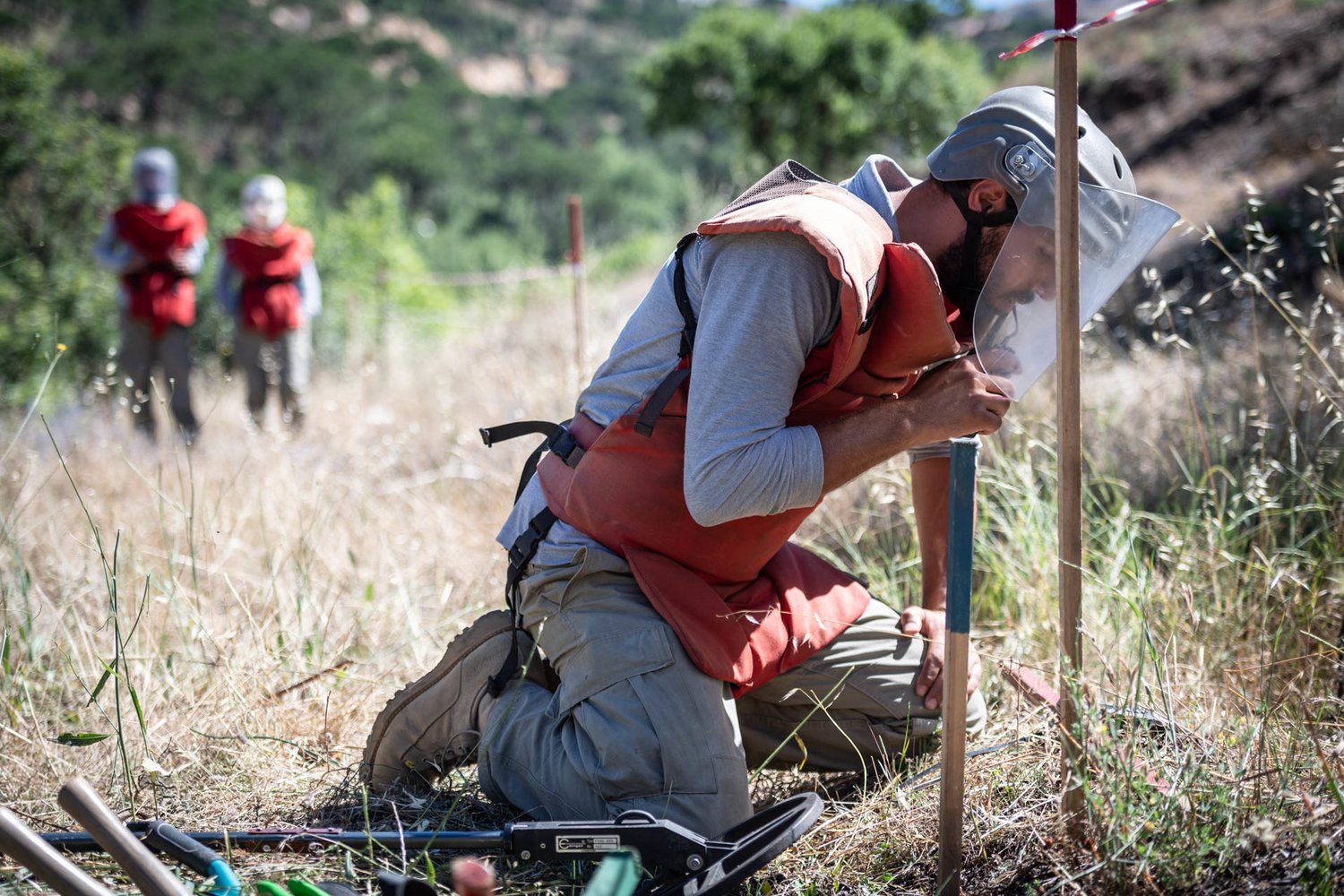Clearance of landmines and Explosive Remnants of War (ERW) is a challenging, time-consuming and expensive activity utilizing manual deminers and the support of Animal Detection Systems (ADS), mechanical systems and remote sensing equipment.
For these reasons, ensuring that clearance takes place only in areas where mines/ERW contamination are confirmed remains one of the most important objectives of the land release concept.
Determining the exact location of minefields or cluster munition strikes can be one of the most difficult tasks faced by national authorities and operators. Research has concluded that in most Explosive Ordnances (EO) affected countries, the Suspected Hazardous Areas (SHA) are exaggerated in terms of size and inaccurately placed in terms of geographical location. To address these challenges, the Mine Action sector requires improved Non-technical Survey (NTS) and Technical Survey (TS) methods, allowing for clearance to be conducted in the most effective and efficient way possible. It requires a systematic approach where a combination of operational assets – The Tool Box – are employed in a pre-determined sequence at different stages of survey and clearance operations.
Efficient and effective survey and clearance operations should be accompanied by the implementation of modern information management tools and new technologies. The Centre supports this approach by offering training courses as well as operational support and advice to National Mine Action Authorities and operators in mine/ERW-affected countries. When called upon, the GICHD also participates in testing survey and clearance systems and assisting in bridging the gap between operators, researchers, development institutions, manufacturers, national authorities and donors. Finally, through its role of hosting the Secretariat for the International Mine Action Standards, the Centre assists the United Nations Mine Action Service (UNMAS) in updating standards and technical notes.

Detection methods
Manual Systems
Manual mine clearance methods and techniques continue to rely on deminers working along marked lanes using metal detectors, prodders, rakes and excavation tools to identify, remove and dispose of EO. Although relatively slow progress is made with manual clearance, the method is widely used by mine action programmes due to the high level of confidence associated with the land they clear. Manual deminers establish lanes and grid systems, conducting targeted and systematic investigations as well as area clearance. To ensure safety, deminers are required to maintain a predetermined distance between each other. Once an EO is identified, the deminer carefully excavates it. Depending on the type of EO, it is either blown up in situ or neutralized/disarmed and disposed of at the end of each working day.
Animal detection systems
If trained and tested in accordance with IMAS, ADS have the potential to increase the effectiveness and efficiency of TS and clearance operations. The animal most commonly used for EO detection is the dog, owing to its proven ability to work with and be trained by humans. Rats can also be used. Dogs and rats are trained to detect various types of explosives or other material associated with mines/ERW. The animals tend to be more effective in low-density or individual EO within SHA/CHA boundaries, rather than in areas of high-density contamination. Dogs are particularly useful for TS operations. They have the ability to cover large areas much faster than manual deminers. Other recommended tasks for ADS could include:
- post-clearance sampling of areas already cleared by manual and mechanical demining (Quality Control)
- areas that are inaccessible to machines
- access routes to hazardous areas
- cluster munitions strikes and battle areas
ADS are a powerful tool with operational added value when used in combination with manual and mechanical systems. They have the potential to can significantly increase the productivity of TS and clearance operations.
Mechanical systems
Mechanical demining systems can greatly increase the effectiveness and efficiency of mine/ERW clearance operations. A variety of mechanical systems are manufactured to destroy and detonate mines. Machines have the potential to accelerate the progress of other assets through removing vegetation and tripwires and breaking up soil in support of manual deminers and ADS. They play a crucial role in the Systematic investigation variant of TS. Today, a multitude of mechanical systems are available on the market, including:
- mechanical systems to detonate and destroy mines
- mechanical systems equipped with power supply, navigation and positioning systems
- remote-controlled mechanical systems
- mechanical systems created from agricultural vehicles and machinery as a low-cost alternative to other options available on the market
Remote sensing and robotics
Remote Sensing is the method of data acquisition and information analysis of an object or phenomenon without making physical contact with the object. Remote sensing in Mine action is used not only to assist in planning, monitoring and evaluating clearance operations, but also to identify potential contamination areas. Unmanned aerial vehicles are often used as carrier for remote sensing equipment and technologies associating both are fast developing.
Tele-operated, semi-autonomous or fully automated robotic solutions are used in mine action to substitute for humans or replicate human actions in functions where physical intervention might pose danger to human live. Robotic solutions are developing to address urban EO contamination.
Technologies
New technologies are developed, tested and used within the context of manual clearance, animal detection and mechanical systems. The GICHD acts as an interface between researchers, manufacturers and field operators to avoid spending funds on duplications or developing non-applicable technical solutions.
The GICHD:
- Advises on improving technology by assessing the effectiveness of technology that is already in use
- Collects and disseminates information about successful technology and sound methodological approaches to the wider community
- Acts as a focal point for certain aspects of technological development, testing, assessment and dissemination in mine action
- Informs the broader mine action sector about technological developments and technical solutions that enhance operational activities, improve safety, take into consideration the impact on the environment and assist in treaty compliancy
- Co-organize with UNMAS a global technology workshop focusing on selected new technologies particularly relevant for the sector
The story of Esteban Rueda
Deputy Programme Manager, NPA, Colombia
